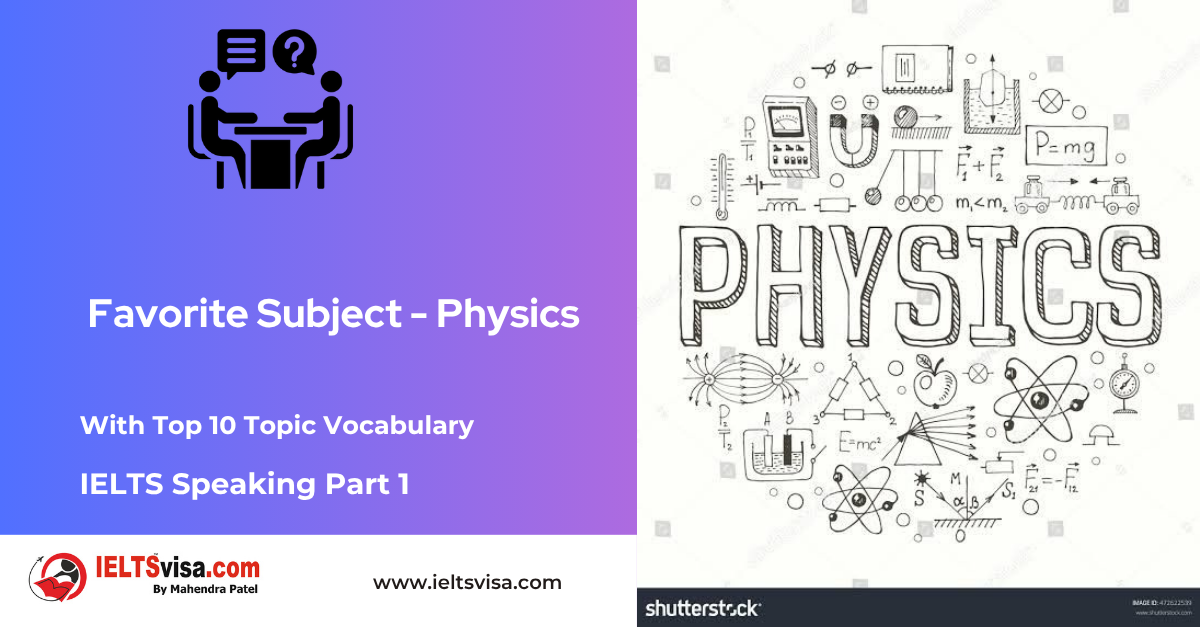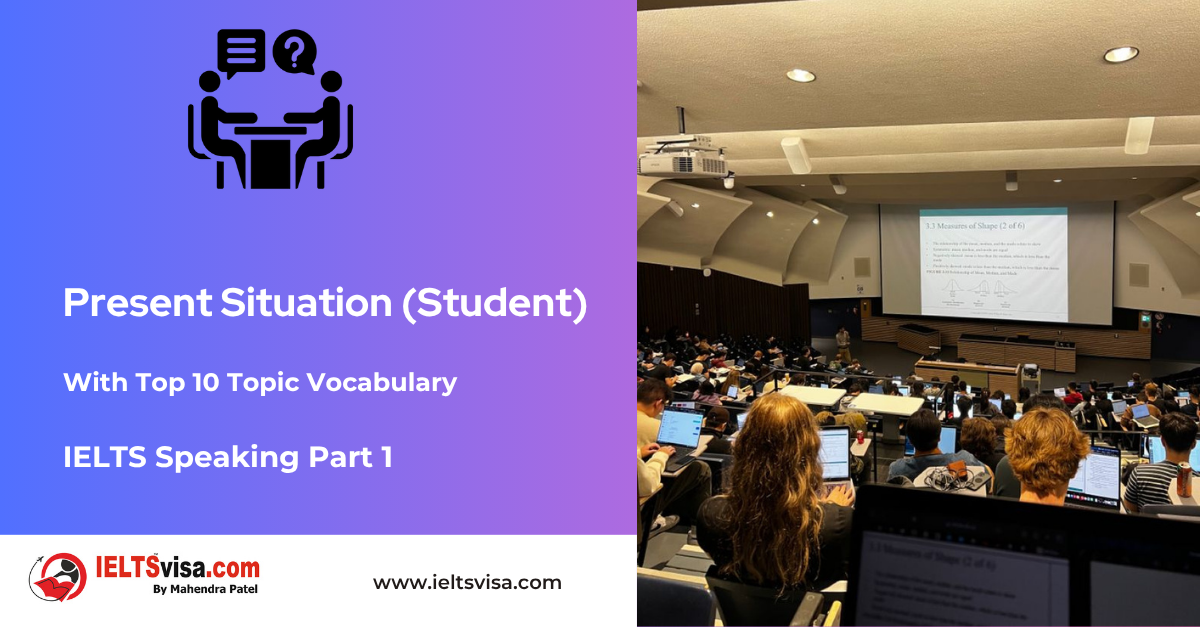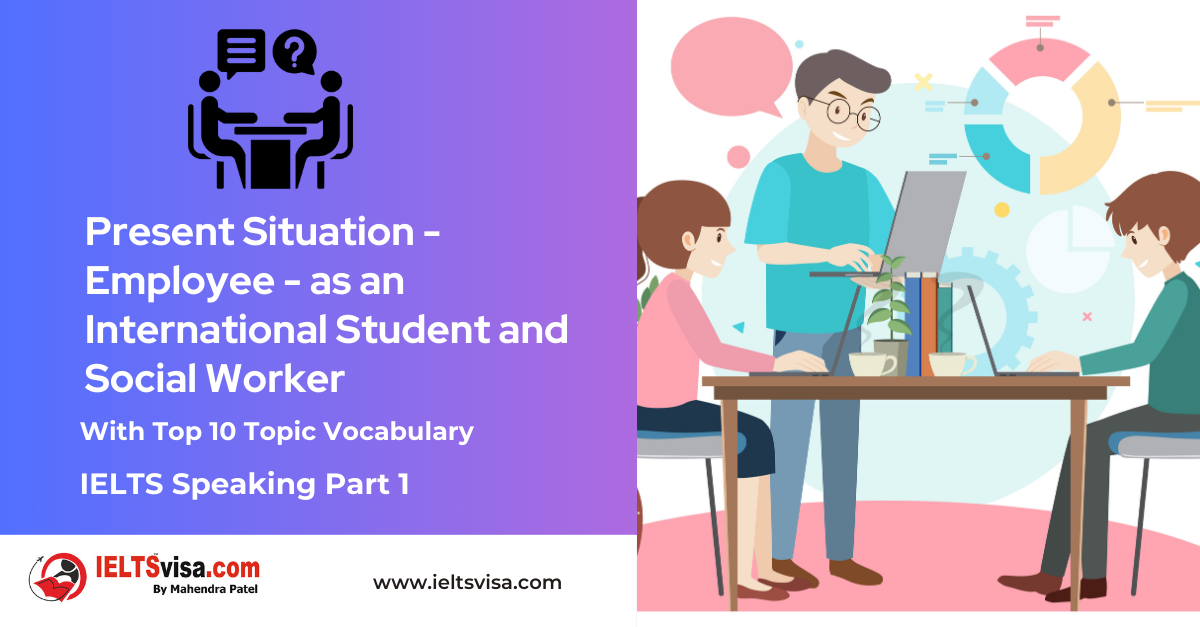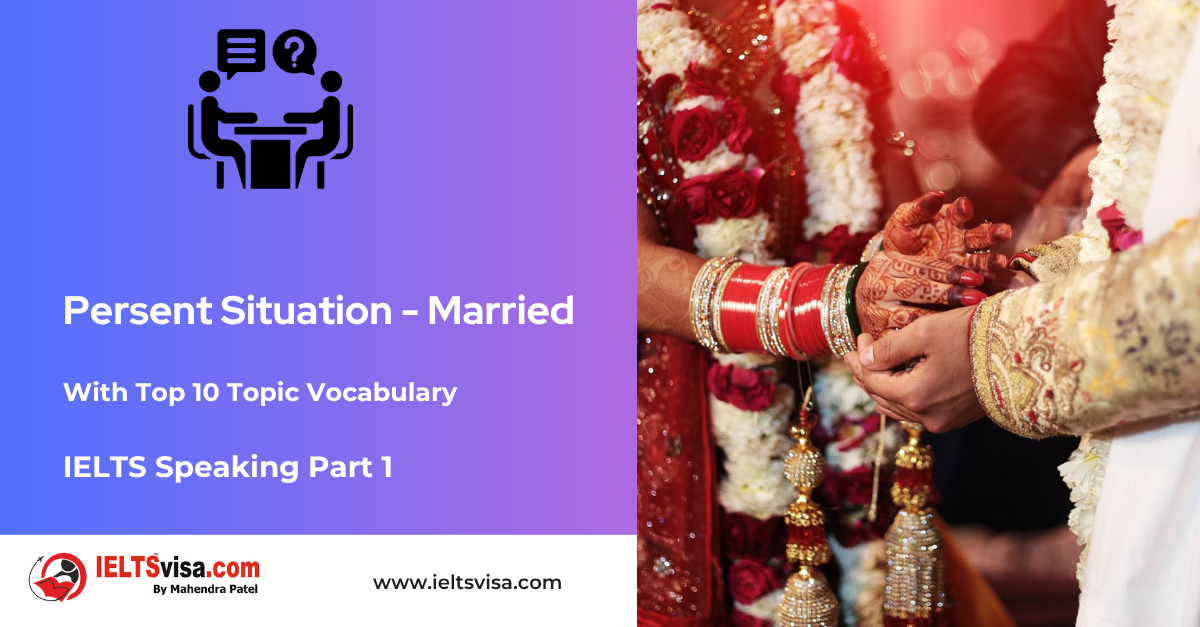The Verb To Be
Grammar for IELTS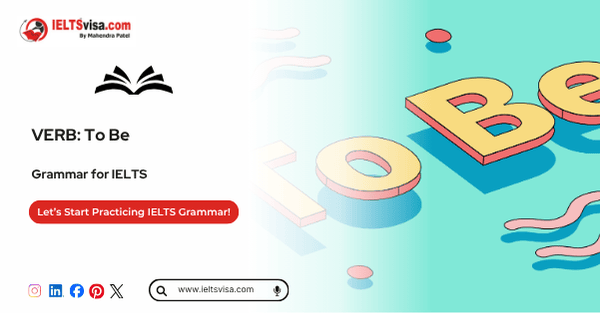
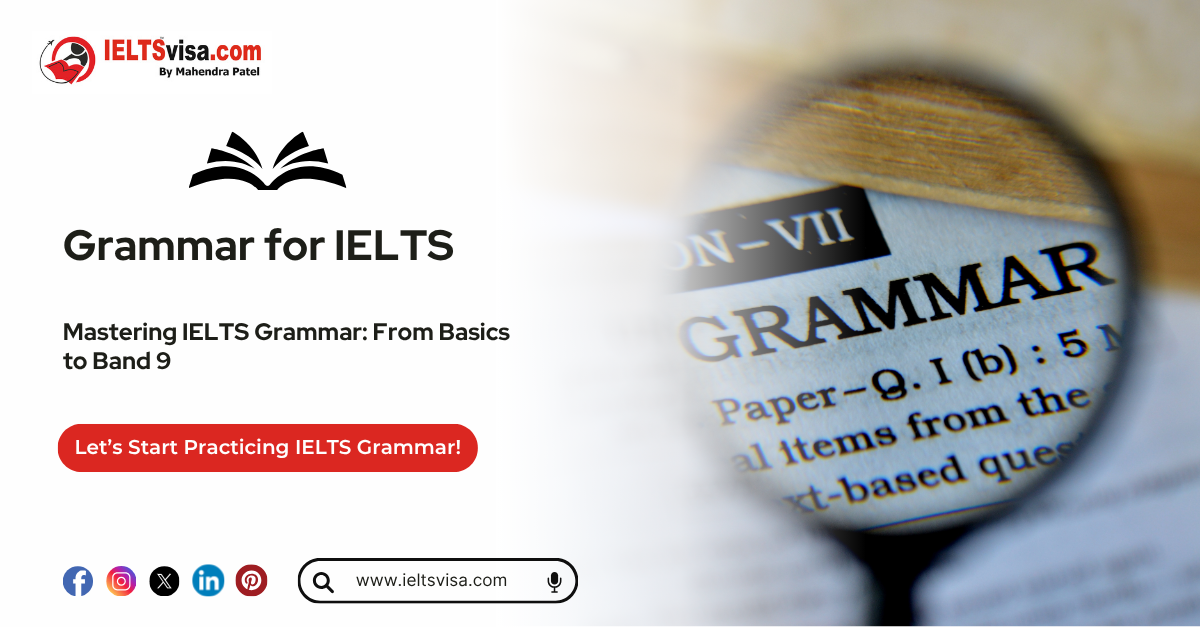
The Verb “To Be” Explained, With Examples
Hi students! Welcome to another exciting lesson in English grammar. Today, we’re going to talk about one of the most important and commonly used verbs in the English language: the verb “to be.” Whether you’re just starting to learn English or looking to sharpen your skills, understanding “to be” will help you build stronger sentences and communicate more clearly.
What Is the Verb “To Be”?
The verb “to be” is used to talk about:
-
- Existence: I am here.
- Occurrences: The meeting is tomorrow.
- Characteristics: She is tall.
It’s a highly versatile verb that can act as:
1. A main verb (e.g., I am happy).
2. An auxiliary (helping) verb to form continuous and passive tenses (e.g., He is running; The book was written).
3. A linking verb to connect the subject to additional information (e.g., The sky is blue).
Because “to be” is irregular, its form changes depending on the subject and tense. Below is a breakdown of its forms and their corresponding uses.
Forms of the Verb “To Be”
Present Tense
|
Subject |
Form |
|
I |
am |
|
You |
are |
|
He/She/It |
is |
|
We/You (plural)/They |
are |
Examples:
-
- I am a student.
- She is kind.
- They are ready.
Past Tense
| Subject | Form |
| I | was |
| You | were |
| He/She/It | was |
| We/You (plural)/They | were |
Examples:
-
- I was tired yesterday.
- They were at the park.
Other Forms
1. Bare Infinitive: be
Example: I want to be a doctor.
2. Present Participle: being
Example: He is being polite.
3. Past Participle: been
Example: They have been here before.
Uses of “To Be”
1. As a Main Verb
When “to be” is the main verb, it often describes identity, characteristics, or conditions.
Examples:
-
- I am happy.
- The sky is blue.
- We were excited.
2. As a Linking Verb
“To be” connects the subject of a sentence with information about the subject (a noun, pronoun, or adjective).
Examples:
-
- She is a teacher. (connecting subject with a noun)
- They are strong. (connecting subject with an adjective)
3. As an Auxiliary (Helping) Verb
“To be” helps other verbs form tenses, especially:
-
- Continuous Tenses (action in progress):
He is running.
They were studying. - Passive Voice (subject receives the action):
The book was written by an author.
The game is being played.
- Continuous Tenses (action in progress):
The Continuous Tenses with “To Be”
Present Continuous
Structure: [am/is/are] + [present participle]
-
- I am learning English.
- They are playing soccer.
Past Continuous
Structure: [was/were] + [present participle]
-
- She was reading a book.
- We were watching TV.
Future Continuous
Structure: [will be] + [present participle]
-
- He will be studying tomorrow.
The Perfect Tenses with “To Be”
“To be” is also part of perfect tenses when combined with the auxiliary verb have and the past participle has been:
Present Perfect
Structure: [has/have] + [been]
-
- I have been busy lately.
- She has been a great help.
Past Perfect
Structure: [had] + [been]
-
- They had been friends for years before moving apart.
Future Perfect
Structure: [will have] + [been]
-
- By tomorrow, he will have been here for two hours.
Using “To Be” in Questions and Negatives
Questions
When asking questions, invert the subject and the verb “to be.”
Examples:
-
- Are you ready?
- Was she at the party?
Negatives
To make “to be” negative, add “not” after it.
Examples:
-
- I am not tired.
- They were not late.
- She will not be coming.
Contractions:
-
- I’m not (I am not)
- He isn’t (He is not)
- We weren’t (We were not)
Special Uses of “To Be”
Imperatives
Use “be” to give commands or advice.
Examples:
-
- Be quiet!
- Don’t be late.
With Modal Verbs
The bare infinitive be is used with modal verbs like can, must, should, and might.
Examples:
-
- You must be careful.
- They might be at the park.
Practice Time!
Here are a few exercises to test your understanding:
1. Fill in the blanks with the correct form of “to be”:
-
- I _____ excited about the trip.
- They _____ not at the library yesterday.
- She _____ helping her friend right now.
2. Rewrite these sentences as questions:
-
- He is a good player.
- They were at the museum.
3. Make these sentences negative:
-
- I am learning English.
- We were late for the train.
Answers
1. am, were, is
2. Is he a good player? Were they at the museum?
3. I am not learning English. We were not late for the train.

Our Books
Master IELTS Speaking Part 1
IELTS Writing Task 1 Book
IELTS Writing Task 2 Book
Practice IELTS Other Modules
IELTS Listening
The IELTS Listening test assesses how well you can understand spoken English in various contexts. It lasts about 30 minutes and is divided into four sections with a total of 40 questions. The listening tasks become increasingly difficult as the test progresses.
IELTS Academic Reading
The IELTS Academic Reading section assesses your ability to understand and interpret a variety of texts in academic settings. It is designed to evaluate a range of reading skills, including skimming for gist, reading for main ideas, reading for detail, understanding inferences, and recognizing a writer's opinions and arguments.
IELTS Speaking
The IELTS Speaking test assesses your ability to communicate in English on everyday topics. It lasts 11-14 minutes and consists of three parts: introduction, cue card, and a discussion based on the cue card topic.
IELTS General Reading
IELTS General Reading tests your ability to understand and interpret various types of texts. Here are some key areas and types of content you can expect to encounter in the reading section, along with tips for effective preparation.
IELTS Academic Writing Task 1
In IELTS Academic Writing Task 1, you are presented with a visual representation of information, such as graphs, charts, tables, or diagrams, and you are required to summarize, compare, or explain the data in your own words.
IELTS General Writing Task 1
In IELTS General Writing Task 1, you are required to write a letter based on a given situation. The letter can be formal, semi-formal, or informal, depending on the prompt. Here’s a breakdown of the key components to include in your letter
IELTS Academic Writing Task 2
In IELTS Academic Writing Task 2, you are required to write an essay in response to a question or topic. Here’s a guide to help you understand the essential elements of this task
IELTS Exam Tips
To succeed in the IELTS exam, practice regularly, familiarize yourself with the test format, improve your vocabulary, develop time management skills, and take mock tests to build confidence.
Grammer for IELTS
Grammar is the foundation of effective communication in English. Understanding tense usage, subject-verb agreement, and sentence structure enhances clarity and coherence in writing and speaking.
Vocabulary for IELTS
Vocabulary plays a crucial role in the IELTS (International English Language Testing System) exam, especially in the Speaking and Writing sections. Here’s an overview of why vocabulary is important and how it impacts your performance
RECENT IELTS SAMPLES QUESTIONS AND ANSWERS
IELTS Speaking Part 1 – Favourite Sujbect – Physics
IELTS Speaking Part 1 - Favourite Sujbect - Physics Q: What is your favourite subject? A: My favourite subject...
IELTS Speaking Part 1 – Present Situation (Student)
IELTS Speaking Part 1 - Present Situation (Student) Q1: Are you a student or do you work?A: I’m a full-time...
IELTS Speaking Part 1 – Present Situation – Employee – as an International Student and Social Worker
IELTS Speaking Part 1 - Present Situation - Employee - as an International Student and Social Worker Q1: Are...
IELTS Speaking Part 1 – Persent Situation – Employee- as an Electric Engineer
IELTS Speaking Part 1 - Persent Situation - Employee- as an Electric Engineer Q1: What do you do for a...
IELTS Speaking Part 1 – Persent Situation – Employee – as an Software Engineer
IELTS Speaking Part 1 - Persent Situation - Employee - as an Software Engineer Q1: What do you do for a...
IELTS Speaking Part 1 – Persent Situation – Married
IELTS Speaking Part 1 - Persent Situation - Married Q1: Are you married?A: Yes, I am married. My spouse and I...

